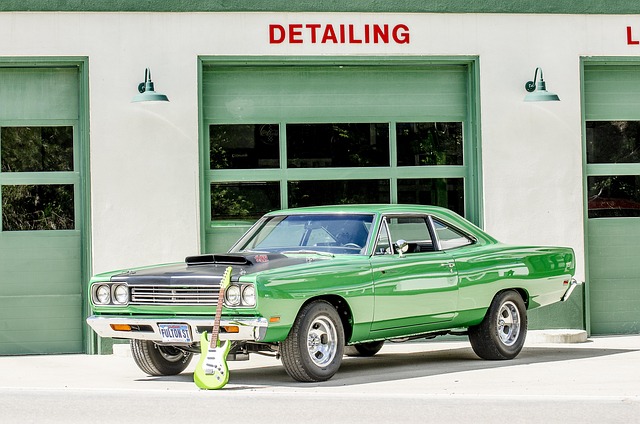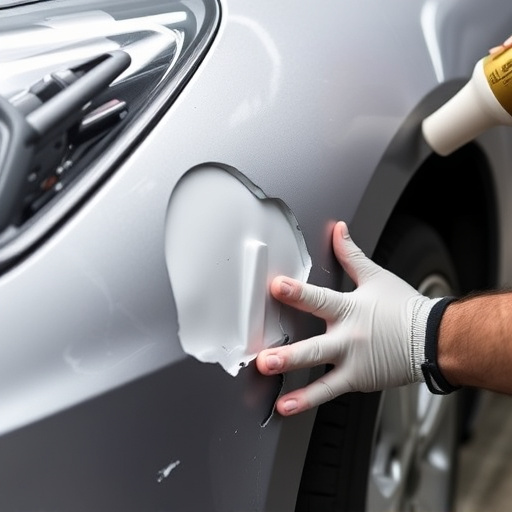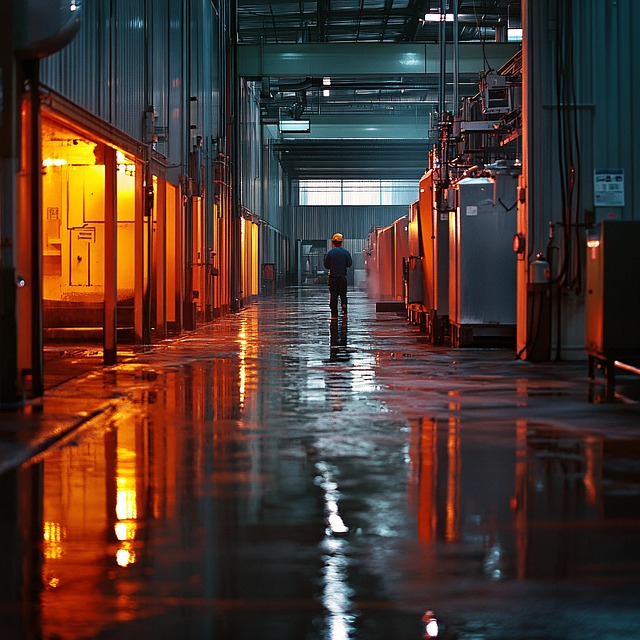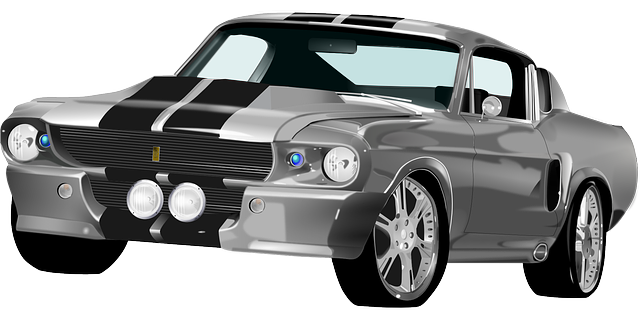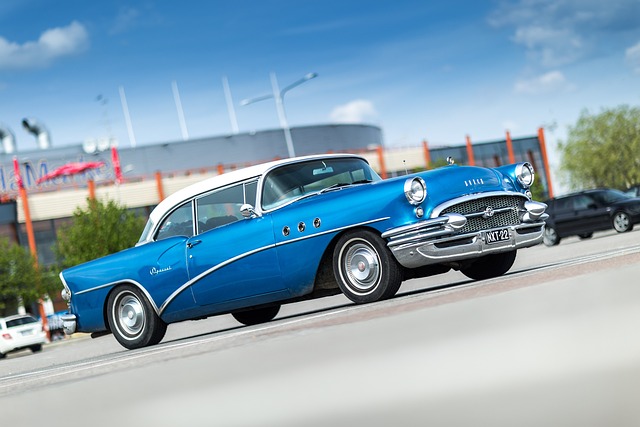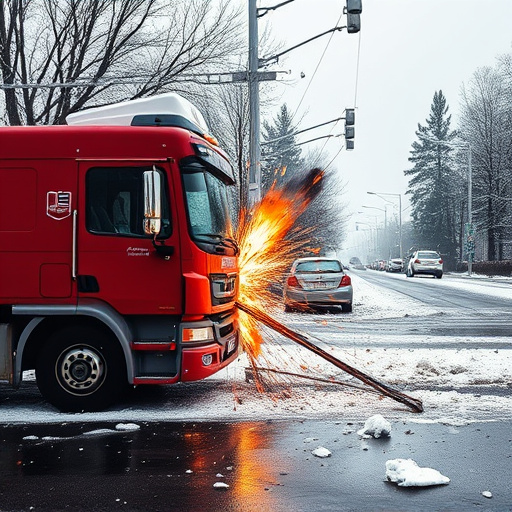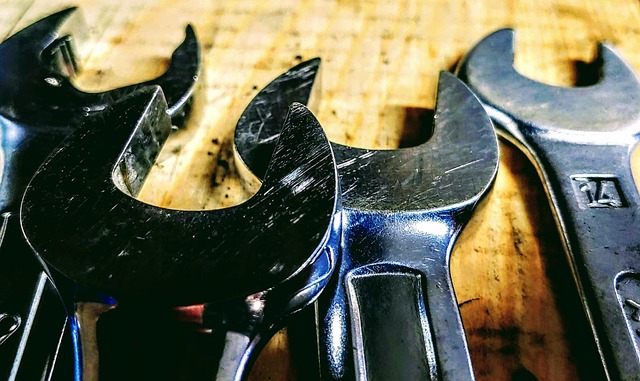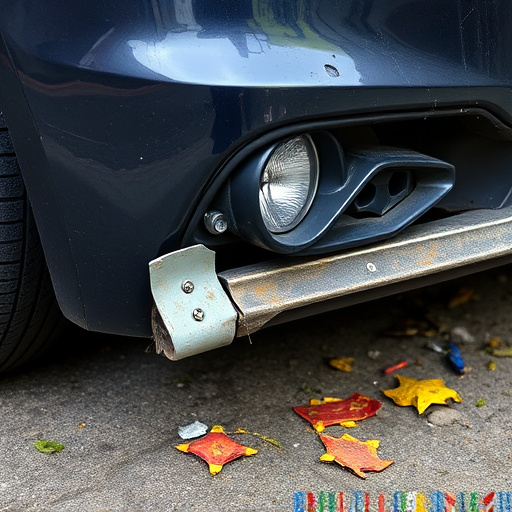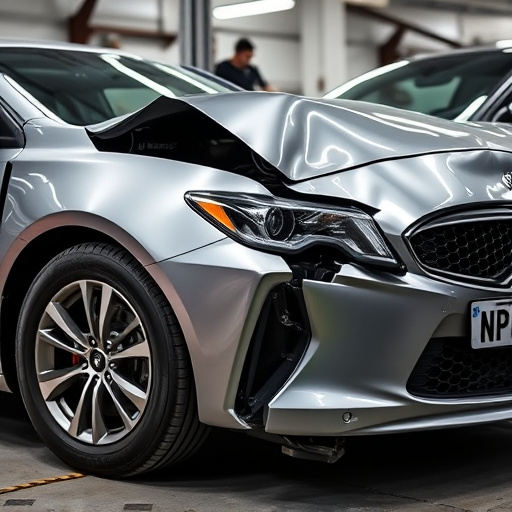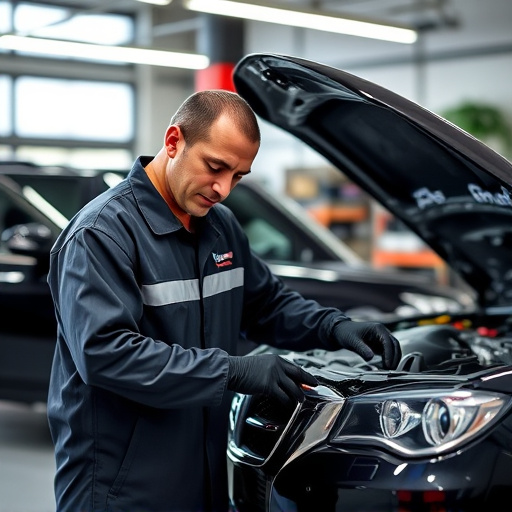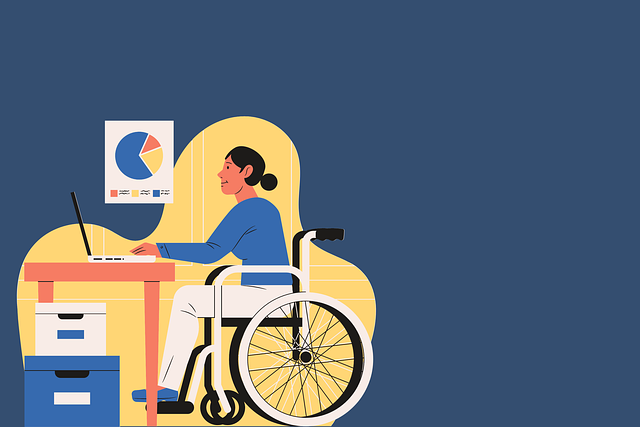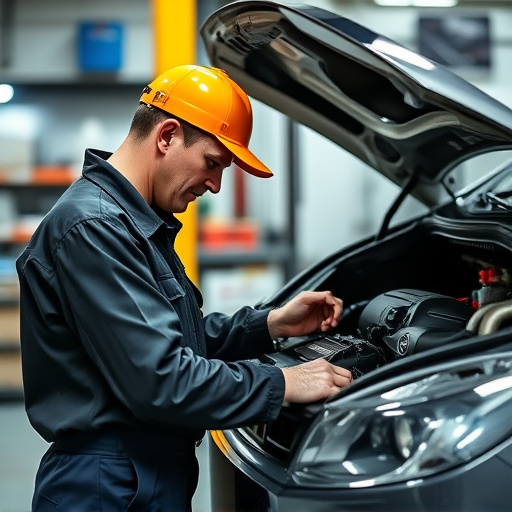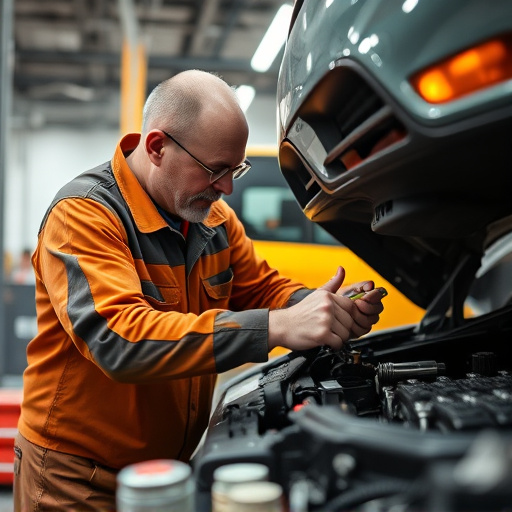Collision damage can severely impact your vehicle's vital cooling system, affecting engine temperature regulation. Post-collision, it's crucial to evaluate and repair key components like radiators, hoses, and water pumps to prevent leaks, inefficiencies, or failures. Reputable auto body shops use advanced diagnostics to ensure proper repairs or replacements, restoring your vehicle's cooling system for safe and efficient operation. Regular maintenance checks after collision repair are essential to prevent future overheating issues. Proactive preventive measures like regular flushing and part replacement extend the cooling system lifespan.
Collision damage can have significant effects on your vehicle’s performance, especially critical systems like the cooling system. In this article, we explore how accidents impact key components of your car’s cooling system and delve into effective strategies for assessment, repair, and maintenance post-collision. Learn essential steps to ensure a safe and efficient driving experience after repairs are made, focusing on the crucial aspect of cooling system collision repair.
- Understanding Collision Damage and Its Impact on Key Components
- Assessing and Repairing the Cooling System After a Collision
- Preventive Measures: Maintaining Your Vehicle's Cooling System Post-Repair
Understanding Collision Damage and Its Impact on Key Components

Collision damage can have a significant impact on your vehicle’s cooling system, affecting its performance and longevity. When a collision occurs, various components of your car are subjected to extreme forces, leading to potential harm or malfunction. The cooling system, responsible for maintaining optimal engine temperature, is no exception. Key parts like the radiator, hoses, and water pump can sustain damage, resulting in leaks, reduced efficiency, or even failure.
Understanding the extent of collision damage is crucial before considering collision repair services at a trusted auto body repair shop. Proper evaluation ensures that the cooling system, alongside other critical components, undergoes necessary repairs or replacements during vehicle restoration. This proactive approach not only enhances safety but also guarantees your car’s optimal functioning post-collision, ensuring you hit the road with renewed peace of mind.
Assessing and Repairing the Cooling System After a Collision

After a collision, assessing and repairing your vehicle’s cooling system is crucial for maintaining its optimal performance and longevity. The initial step involves thoroughly inspecting all components, from the radiator to the water pump, for any signs of damage or leakage. Many auto collision centers employ advanced diagnostic tools to identify issues within the cooling system, ensuring no internal damage goes unnoticed.
Depending on the extent of the collision, repairs may range from replacing a damaged hose or thermostat to more complex procedures such as rebuilding or swapping out major parts like the water pump or radiator. A reputable automotive body shop will not only handle these repairs but also offer tire services if needed, ensuring your vehicle is restored to its pre-collision condition, safe for the road, and efficient in temperature regulation.
Preventive Measures: Maintaining Your Vehicle's Cooling System Post-Repair

After a collision, it’s crucial to ensure that your vehicle’s cooling system is thoroughly inspected and maintained as part of the repair process. While professional auto body painting or auto repair services will address visible damage, the cooling system often requires special attention due to its critical role in keeping your engine from overheating. Regular maintenance checks post-repair are essential to prevent future issues. These can include checking for leaks, ensuring proper coolant levels, and verifying that all components are functioning optimally.
To further protect your vehicle’s cooling system, establish a preventive maintenance schedule. This includes regular flushing of the coolant, replacing worn parts like hoses or thermostats, and keeping an eye on signs of corrosion or damage. By taking these proactive steps, you’ll not only extend the lifespan of your cooling system but also enhance the overall reliability of your automobile, ensuring it performs efficiently for years to come.
After a collision, it’s crucial to understand how damage can impact your vehicle’s cooling system. By assessing and repairing this vital component promptly, you prevent further complications and ensure your car operates optimally. Regular maintenance and preventive measures are key to keeping your cooling system in top shape, enhancing overall vehicle performance and longevity. When it comes to collision repair, addressing the cooling system effectively is a game-changer for maintaining a reliable and safe ride.
